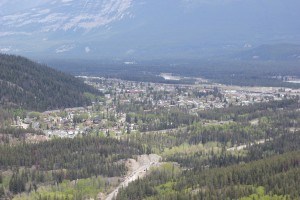 Whether it’s a park pass, a tourism levy or a destination marketing fee, organizations at the national, provincial and even private level seem to have managed to find ways to generate additional revenue.
Whether it’s a park pass, a tourism levy or a destination marketing fee, organizations at the national, provincial and even private level seem to have managed to find ways to generate additional revenue.
Yet when it comes to the municipal level, our local government has very few revenue tools at its disposal, beyond increasing property taxes and user fees.
For most municipalities these revenue tools should suffice, but for tourism-based communities like Jasper, property taxes and user fees are simply no longer enough to support the town’s aging infrastructure and services, which accommodate more than two million visitors annually.
In an effort to find new sources of revenue, Jasper, Banff and Canmore are working together to lobby Alberta to give them access to special revenue tools, such as a tourist consumption levy, a real estate transfer tax or develop a new revenue sharing agreement with the province.
While it’s unclear which option the municipality is leaning towards, the mayor has publically stated that he would prefer to increase the size of the pie rather than reallocate the size of the slices, in other words implement a new tax.
Creating a new tax is never a popular move, especially for a politician during an election year, but it’s not the first time a new tax has helped Jasper.
Take for instance Tourism Jasper’s destination marketing fee (DMF). By all accounts, the voluntary two-per-cent tax has been hugely successful generating about $2.7 million annually to help market Jasper as a choice destination.
This small, yet significant tax has gone a long way to help ensure Jasper’s economic success and by all accounts it appears the economy can bear the extra cost.
In fact, since the Jasper Destination Marketing Corporation invited restaurants, hotels and attractions to implement the tax in 2010, more than 60 businesses have come on board.
According to Parks Canada, visitation has jumped by approximately 14 per cent since 2010 with more than 2.2 million visitors in 2016 and this summer hotels reached a nightly capacity of 85-100 per cent.
Add to that the fact that the province has been applying a four-per-cent tourism levy on hotel rooms since 2005 and it seems tourists are either indifferent towards paying a bit of extra money or see value for what they are getting.
If the business community can get behind a voluntary tax to help market our town, it surely can get behind a small tourist consumption levy that would help support our basic needs.
With a municipal election on the horizon it’s time we begin seriously discussing a tourist consumption levy because, after all, municipal services are the backbone of this community.
